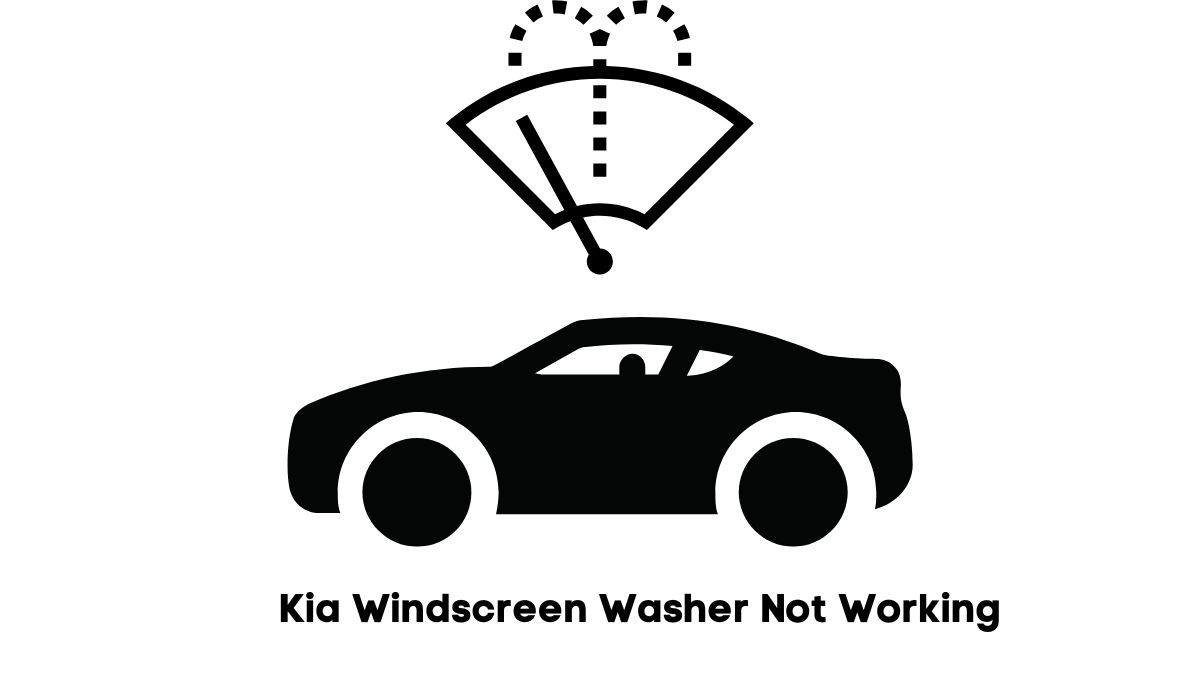The windscreen washer is somewhat complicated. If you have any doubts, look at this Kia Rio manual. It shows consumers how to test and replace a front washer motor. But you shouldn’t rush to replace the motor when the problem might lie elsewhere.
Because windscreen washers are complicated, they can fail for a multitude of reasons, including:
1). The Switch Doesn’t Work
The windshield wiper switch activates the wiper. It also controls the speed. You pull the lever towards you to spray the windscreen with the washer fluid. This switch can fail.
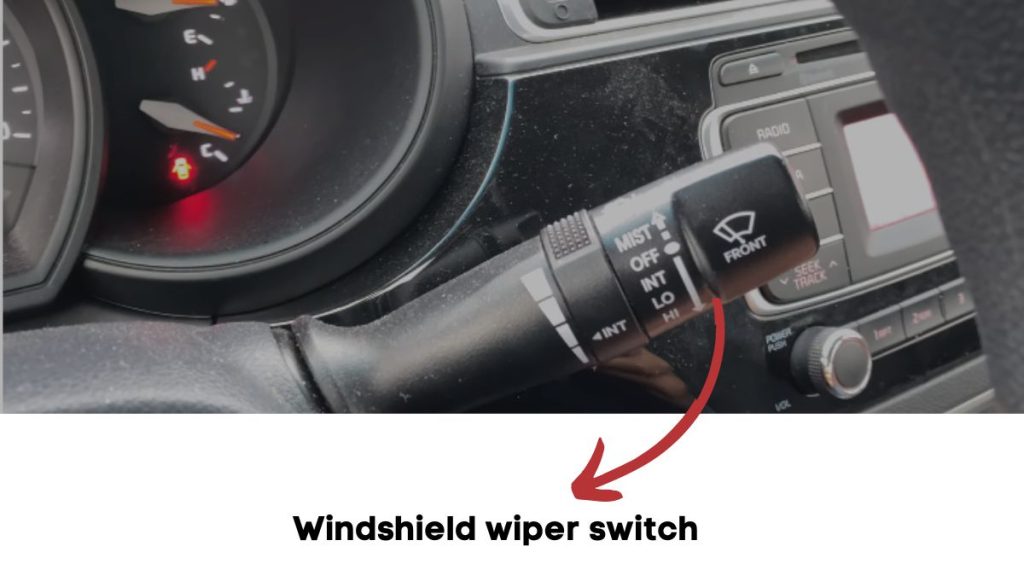
How to fix it?
Youcanic has uploaded a video that shows how to remove the steering wheel to access the turn signal and wiper switch for a Kia Optima. But the process of accessing and replacing the combination turn wiper switch is far more complicated. Laypeople are better off taking their Kia to a mechanic.
The goal is to clean the contacts. If that doesn’t work, you can replace the switch.
2). The Tank Is Empty & Fluid Is Frozen
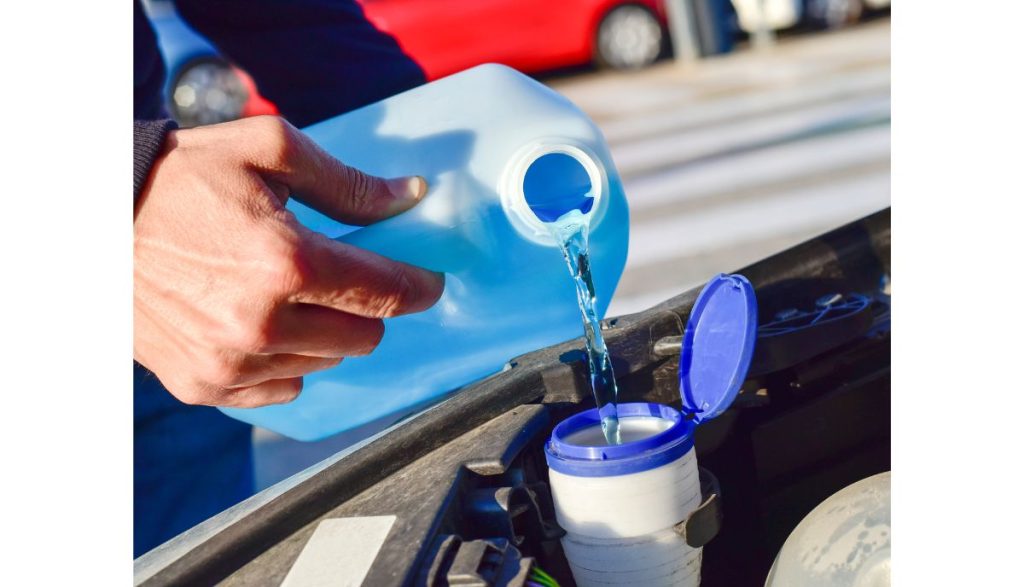
The pump doesn’t materialize windshield washer fluid from thin air. It draws the fluid from a tank that eventually depletes. Don’t tamper with the pump and motor until you’ve checked the tank. If it’s empty, the windshield washer won’t work.
If you live in an area with cold conditions, keep in mind that windshield washer fluid can freeze. This is a bigger deal than many people realize because the frozen fluid will rapture the tank, lines, and nozzles. It can also damage the pump.
How to fix it?
- Use the manual to locate the tank.
- Remove the cap and check the fluid level.
- Add washer fluid to the tank where necessary.
- Ask a mechanic to recommend a washer fluid that matches the weather conditions in your area to prevent freezing. They can also tell you the correct dilution ratio.
- Don’t forget to seal the tank. Otherwise, the washer fluid will pour.
- Don’t move on without testing the washer system. If the nozzles won’t spray the fluid, search for obstructions and leaks.
Also, start by preventing your windshield washer fluid from freezing in the first place. Don’t forget that frozen washer fluid can damage the pump:
- Keep your car in a garage in the winter. If the fluid continues to freeze, add better insulation to the garage door.
- Install an engine block heater.
- Match the washer fluid to the conditions. According to Auto Glass Express, all-season washer fluid freezes at 32 degrees F. On the other hand, winter-based formulations will maintain their liquid state until temperatures exceed -20 degrees F. Some brands are strong enough to serve your needs at -30 degrees F.
- Leicester Mercury encourages consumers to pay close attention to the dilution ratios recommended in the instructions. The washer fluid will freeze in the winter if you add too much water.
- If the washer fluid freezes, start by checking for cracks in the tank. This involves adding new washer fluid and searching for leaks. If you discover cracks, replace the reservoir. Do the same for the lines that carry the fluid to the nozzles. If the ice raptured them, replace these hoses.
- Pouring hot water into a tank and hoses with frozen washer fluid is a bad idea. Leave the car in a warm place, such as an insulated garage, and wait for the ice to thaw.
- If you can’t wait, use a hairdryer. You can also remove the frozen reservoir. Place it next to a heat source, such as a radiator.
- Modern vehicles have defrosters. Activate yours before using the washer in freezing conditions. The defroster will warm the windshield. Without the defroster, the washer will freeze on the glass.
3). The Spray Nozzles Are Clogged
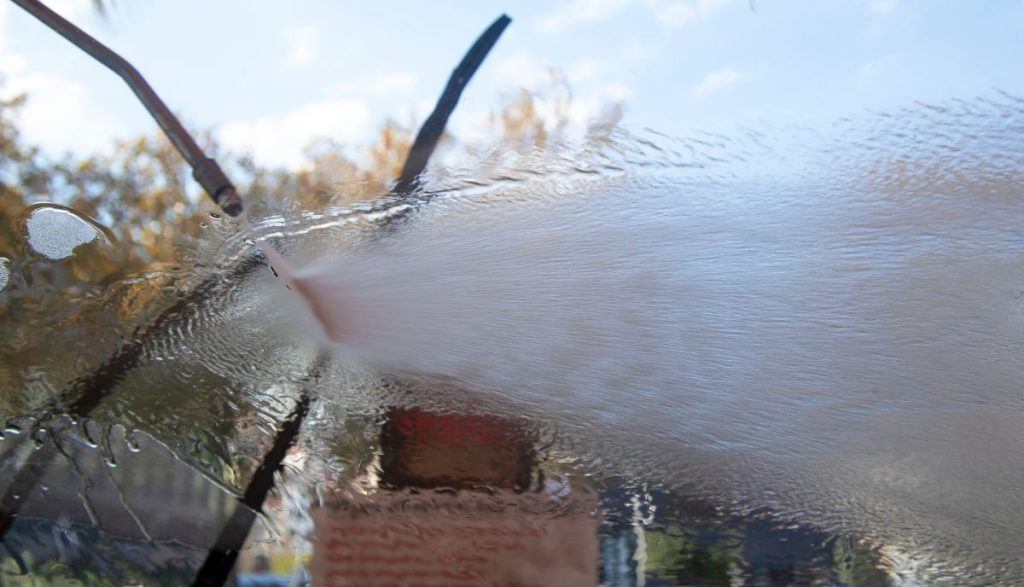
The nozzles sit at the bottom of the windshield. They are responsible for spraying the glass with washer fluid. Unfortunately, their location makes them susceptible to pollutants such as dust, pollen, leaves, and dead insects.
Those impurities will collect and clog the nozzles when it rains. Modern vehicles have micro-emitters that produce a finer spray. Not only do they clog faster, but they are more challenging to clean. Some clogged nozzles won’t work. Others will produce a weaker, less effective spray that doesn’t cover the windshield.
If the nozzles seem fine, check the hoses. These lines guide the washer fluid from the tank to the nozzles. If they’ve broken, the fluid will leak underneath instead of spraying the windshield.
How to fix it?
- Stick a safety pin into each nozzle’s opening to remove debris.
- Drain the washer fluid tank. If it has dirt and debris, get rid of it.
- Add clean water to the tank and drain it to remove dirt and debris.
- Use compressed air to clear the hoses and nozzles.
- If you’re sure the system is clean, reconnect the hoses and refill the tank.
- Use this opportunity to identify leaking hoses. Replace them. If rodents chewed through the hoses, you should also examine the electrical cables for damage. Solve the rodent problem before they eat through the new hoses and cables.
4). The fuse Has Blown
The fuse defends against short circuits and surges. Locate the fuse box and identify the windshield wiper fuse. Remove it with needle nose pliers and look at the metal strip in the middle. Is it broken? The fuse has blown. The windshield wipers won’t work, and neither will the windscreen washer.
How to fix it?
- Use the manual to find the fuse box and water pump fuse.
- Inspect the fuse. If the metal strip is broken, the fuse is dead.
- Use a test light to confirm your suspicions. Ground the test light by attaching the clip to a metal surface on the car. The test light should illuminate when you touch both sides of the fuse. Don’t forget to activate the washer nozzles while you perform this test.
- If the fuse is dead, replace it.
5). The Windshield Washer Pump Is Defective
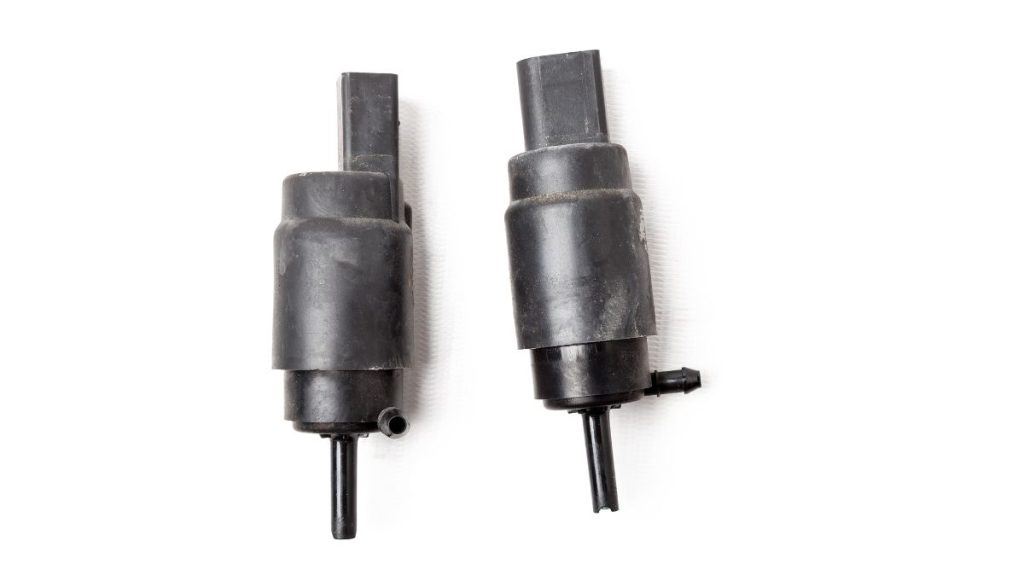
Park the car, roll down the window, and activate the windshield washer. Is the pump whirring? If the pump is humming, but fluid won’t flow to the nozzles, you can blame an empty tank or clogging. If you can’t hear the pump, the component has a defect,
How to fix it?
- If the pump doesn’t hum when you activate the windshield washer, it is most likely dead.
- Confirm this theory by checking the pump’s fuse. If it died, get a new one.
- If the fuse is okay, test the pump. Remove the connector at the back and attach a multimeter.
- A reading of 12 volts shows that the pump is getting sufficient power. Therefore, the pump motor is dead, and you need a new one.
- If the voltage is low, inspect the connectors that bring power to the pump. Replace damaged wires.

